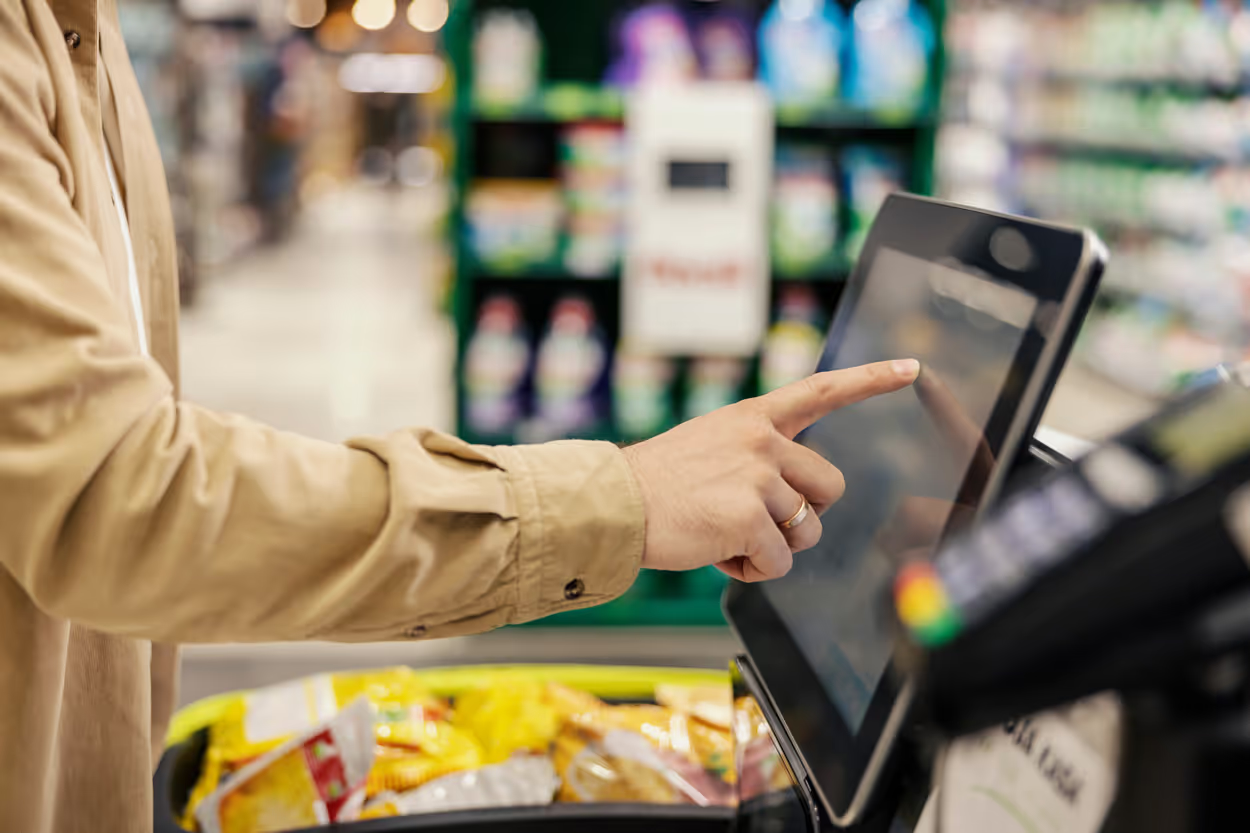Six principles of effective shrink management at the checkout
The annual cost of shrink for retailers is in the billions providing plenty of motivation to get a handle on it. These six key principles for effective shrink management can help retailers take control of shrink, especially in their self-checkout.

It’s clear that consumers preference for self-service is rising supported by studies like the IHL/RIS News Store Matters Study showing a 178 percent growth rate for self-checkouts in the next two years. So how can retailers meet this higher consumer self-checkout demand and, at the same time, better manage stock loss and reduce shrinkage?
Factors in the self-checkout environment that impact shrink
As you deploy self-checkout, the answer for the best way to manage and reduce stock loss is never an easy one because it typically involves multiple causes without concrete data to determine what they are. But finding the answer might involve asking yourself some questions first, like:
- Do you have a design that is optimized for better shopping flow?
- Can you ensure that the checkout process is simple and friction-free?
- How can you help store associates better monitor the self-checkout area?
A new study “Self-Checkout Loss: Increasing Participation and Scan Accuracy Through Design” from ECR Retail Loss Group, deep dives into the day-to-day experience of shoppers and store associates with self-checkout. And they specifically address how the design of your self-checkout can help solve some of the challenges you may be facing.
Here are some common problems to consider as you analyze and deploy self-checkouts in your store:
- Ad-hoc implementation to solve a specific problem, without considering broader data points, can result in intrusive designs that hinder shopper adoption
- Disorderly queues, congestion in the self-checkout area and friction at self-checkout contribute to an unpleasant and chaotic experience for hosts and shoppers—and these frustrations affect how shoppers use self-checkout
- Inconvenient and inefficient self-checkout procedures annoy shoppers and may lead to retail losses whether it’s mis-scans, non-scans and cart abandonment
- Hosts find it difficult to manage their self-checkout area and provide customer service and surveillance when there’s extensive multitasking, especially for long periods of time
- Self-checkout layout isn’t efficient, which greatly affects your hosts ability to manage the self-checkout area
- The systems that are in place for hosts to monitor self-checkout lanes and manage interventions aren’t easy to use or effective
- Diverse shoppers needs aren’t being met, which must be acknowledged and addressed across the self-checkout process
It is critical to understand your shoppers behaviors in your store, at the self-checkout, as well as the influence your associates have in managing shoppers’ needs.
Six principles of effective shrink management:
According to Paladin Security, shrink costs retailers $50 billion every year. So there’s plenty of motivation to find ways to significantly lower that. By using the following six principles of effective shrink management, you can certainly count on making a dent in that number.
1. Data, data, data – Identify key areas for improvement using collected information
Data can give you insights on key shopper profiles and areas of your operation that need improvement. For your customers, you can analyze data about their basket sizes, demographics, checkout and payment preferences. For your operations, you can understand what types of interventions are the most common causing delays and how they’re impacting shopper adoption of various checkout options, including self-checkout, mobile shopping and via a teller. Insights like these from your store data can help you prioritize the issues that you need to address.
2. Coach and help shoppers take the right path
Navigation problems can account for many issues in the self-checkout space. Shoppers often wait for hosts to tell them which till to use, or they approach tills which are out of order or fail to realize that they’re using a card-only self-checkout when they intend to pay with cash. Clearly visible signage is key, but one of the frequently observed problems is that there are too many signs and shoppers stop paying attention to them. The role of the host is key in as distantly as possible guiding shoppers to open tills and making sure they continue to coach shoppers about cash and card payment options.
3. Create clear and effective “playing fields” with innovative layouts
Open layouts that allow good customer flow along with clearly marked separate areas for large trolleys, small baskets and mobile shoppers will help ease congestion and shopper frustration in the self-checkout area.

4. Provide store colleagues with the best possible tools to help customers
A busy self-checkout area is never easy to manage for hosts, often there are multiples things they need to focus on at any one given time. And often the way people cope with stimulus overload is by putting aside less important tasks and only focusing on high priority tasks. So hosts need tools that help them multitask effectively and show them transactions happening on each till but draw their attention to actions that are prioritized, and, in the order, they need to be addressed. This way they can resolve interventions as they come in and deliver better customer service.
5. Use AI-based technologies to reduce stock related leakage and improve the shopper experience
Computer vision and AI-based monitoring of transactions help identify mis-scans and non-scans as they happen, and provide shoppers the chance to self-correct, as many of these are genuine mistakes. If they aren’t self-corrected, hosts will be alerted about the activity and they can resolve the intervention quickly before the transaction gets completed. This approach not only makes it easy for the host to focus on the right alerts, but also helps to resolve it effectively when they’re armed with additional transaction details that they can review before approaching the shopper. The best part is that these kinds of tools have been shown to decrease the number of interventions by up to 25 percent and reduce time hosts spend on interventions by almost 40 percent.
6. Simplify the checkout process with modern technology and reduce shopper frustration
One of the common friction areas for shoppers while checking out is choosing the right PLU for produce items. Make produce selection easy for shoppers with computer vision-based item selection, where the scanner can identify the item on the scale and present shoppers a short list of PLUs they can choose from. The same technology can also help retailers ensure that the item selected by the shopper is indeed the item on the scale to increase asset protection.
Another frustrating intervention for shoppers is ID checks for age-restricted products that keeps them waiting for a host to assist them and it slows down the checkout process. By allowing shoppers to verify their age digitally with either a selfie taken at the self-checkout or supporting a pre-registered digital identity platform, you can remove the friction of having to wait for a host. All of this significantly brings down interventions, improves the shopper experience and frees up your hosts to help more shoppers.
Impact of the six-point plan
Retailers who have adopted these principles have seen great shrink reduction results, better shopper experience and empowered hosts who deliver better customer service. It also enables greater levels of efficiencies and improved margins that support reinvestment in the store.

It’s about transforming to an ‘always open checkout’ that protects your assets, delivers higher customer satisfaction while reducing the overall cost to serve. Making it easier to buy and simpler to serve. Want to learn more?



